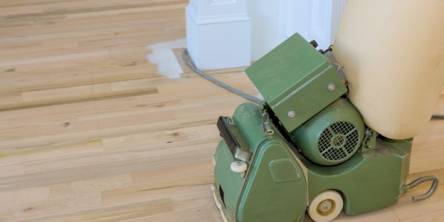How Bed Bugs Travel: From Luggage to Living Room

Most pests enter homes through cracks, gaps, or food sources, but bed bugs take a very different path. They don’t crawl in through the foundation or fly through open windows. Instead, they travel with us—hidden in belongings, furniture, and everyday items.
This hitchhiking behavior makes them one of the most persistent and unpredictable pests. Infestations can happen in any environment, from five-star hotels to small apartments. Cleanliness has little to do with it; all they need is a ride.
That’s why pest control experts emphasize prevention through awareness. Agile Pest Control often helps clients who unknowingly brought bed bugs home after traveling or purchasing secondhand items. Understanding how these pests move is the first step in stopping them.
Why Bed Bugs Are Such Skilled Travelers
Adult bed bugs are about the size of an apple seed, flat and reddish-brown. Their shape allows them to slip into small seams, folds, and crevices. Once inside luggage, clothing, or furniture, they remain hidden until conditions are right.
Unlike lice, they do not cling to skin or hair. Instead, they prefer fabric-lined objects that offer shelter. This makes bags, upholstered furniture, and even folded laundry perfect hiding places.
Their ability to remain undetected for weeks, combined with their patience in waiting for a new host, makes them highly effective at spreading between environments.
Hotels, Airports, and Shared Spaces
Travel is the most common way bed bugs spread. Hotels, regardless of price, are high-risk transfer points. A single female can lay several eggs a day, and those eggs are small enough to go unnoticed in zippers or seams of suitcases.
Airports, buses, and trains also provide opportunities for transfer. Bed bugs can hide in padded seats or luggage storage areas, moving from one traveler’s belongings to another’s. Even brief contact, such as placing a bag on a cushioned chair, can result in exposure.
Because of this, infestations often surprise families after vacations or business trips. Without careful inspection, the pests can settle into a home within days.
Public Transportation and Everyday Risks
Bed bugs don’t limit themselves to hotels. They can be found in theaters, rideshare vehicles, office break rooms, and any fabric-covered surface. Their ability to survive without feeding for weeks allows them to wait patiently until they reach a new host.
Unlike pests that constantly search for food, bed bugs can remain hidden until nighttime, when conditions are quiet. This patience makes them particularly difficult to trace back to the source.
How They Spread Inside Homes
Once inside, bed bugs don’t stay in one place. They spread outward from the original item, looking for dark, quiet hiding spots near their hosts. Common locations include:
- Mattress seams and box springs
- Bed frames and headboards
- Upholstered chairs and couches
- Nightstands and dresser joints
- Electrical outlets and behind wall hangings
Because they reproduce quickly, infestations can expand from one room to an entire home in a short time. Early detection is crucial for keeping them contained.
The Risks of Secondhand Furniture
Buying used furniture carries hidden risks. Even items that appear clean can harbor bed bugs or their eggs. These pests can hide inside joints, seams, or under fabric flaps.
Mattresses are the most obvious danger, but soft chairs, ottomans, and even wooden furniture can carry them. Without proper inspection, bringing secondhand items indoors can introduce an infestation.
Agile Pest Control often works with clients who unknowingly purchased infested furniture. Inspections or professional treatments before bringing items inside can prevent this problem.
The Office-to-Home Cycle
Bed bugs are not limited to bedrooms. They can survive in offices, spreading through upholstered chairs and shared spaces. Employees may unknowingly carry them home in backpacks, laptop bags, or coats.
This cycle makes infestations difficult to track. A single transfer from office to home can spark new colonies, even in places where bed bugs have never been an issue before.
Why a Single Bug Matters
It only takes one fertilized female to start an infestation. Within weeks, eggs hatch, and populations multiply. Because reactions to bites vary, some people may not notice symptoms until the infestation is already widespread.
This delayed awareness allows bed bugs to settle in, making treatment more complex and costly. Professional intervention is often required once they reach this stage.
Prevention Tips for Travelers and Shoppers
Complete avoidance may not be possible, but careful habits can reduce risk:
- Inspect hotel beds and headboards before unpacking.
- Store luggage on racks rather than beds or floors.
- Vacuum bags and wash clothing immediately after returning home.
- Avoid picking up furniture from curbsides.
- Use flashlights to check seams and joints of secondhand purchases.
- Isolate items in sealed bins or bags before bringing them inside.
- These simple steps greatly reduce the chances of an infestation.
When to Call for Help
If you suspect bed bugs, take action quickly. Signs include unexplained bites, dark specks on sheets, or rust-colored stains near sleeping areas. A professional exterminator can confirm the infestation and recommend treatment.
Agile Pest Control provides inspections tailored to identifying early signs of bed bugs, ensuring infestations are caught before they spread further. Acting quickly makes treatments more effective and less disruptive.
Final Thoughts
Bed bugs don’t need open doors or cracks to enter. They travel silently with us, hidden in the objects we use every day. From luggage to secondhand furniture, their journey into homes is subtle but highly effective.
Awareness is the strongest form of prevention. By inspecting belongings, monitoring travel habits, and calling for professional help when needed, families can protect themselves. Agile Pest Control encourages homeowners to treat prevention as part of daily life, reducing the chances of these pests turning a simple trip into a lasting problem.
Similar Articles
Discover modern wallpaper styles that elevate any room. Explore 2025–2026 trends, peel-and-stick options, textures, accent walls, and tips for choosing the right look.
Energy efficiency has become a top priority for homeowners as energy costs rise and comfort expectations increase. While many people focus on windows, insulation, or appliances, the roof plays a major role in regulating indoor temperatures.
Refresh your driveway without replacing it. Discover budget-friendly cleaning, repair, resurfacing, and design ideas that boost curb appeal and durability.
We all know that roofs don’t last forever, but how do you know when it's really time to replace yours? After all, your roof is out of sight, out of mind, right?
As winter settles in and temperatures drop, families across the country brace themselves for the inevitable spike in energy bills.
Wooden floors have long been the subject of admiration for their classic beauty, natural warmth, and strength.
When it comes to giving your home a fresh coat of paint, most homeowners focus on choosing the perfect color and finish.
The holiday season transforms neighbourhoods into glowing wonderlands, but today's homeowners are moving beyond the traditional approach of simply stringing lights wherever they fit.
City homes face a constant challenge around outdoor space. Gardens are small or nonexistent, balconies are narrow, and any outdoor area feels precious.









